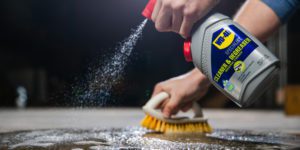New Global Certification Framework for Additive Manufacturing
Accelerating the use of certified products made by AM techniques will help manufacturers gain commercial advantage.
Posted: January 12, 2016
Lloyd’s Register Group Services Limited (Birmingham, UK) launched a new global certification framework to help manufacturers and end users of equipment and components achieve ‘best practice’ in additive manufacturing (AM) and a route to certification. Accelerating the use of certified products made by AM techniques at a time of low oil prices will help onshore and offshore companies gain commercial advantage through cost efficiencies and repeatable quality engineered components.
Their goal-based guidance notes to industry, gives operators and manufacturers in the energy and marine industries confidence in metallic equipment and components produced using AM, which is being called the ‘next industrial revolution’ in the manufacturing mix. The introduction of their certification guidelines for metallic parts, together with engineering research and technology firm TWI Ltd. (Cambridge, UK), represents a move by them as a leading integrity, compliance and specialist risk consulting services group, to help industry harness the technology.
Once deployed, AM will enable companies to more efficiently and cost-effectively manufacture complex components and equipment. “As the Lloyd’s Register Energy Technology Radar survey suggests, AM will have a major impact in the oil and gas industry in the next five years,” says Chris Chung, the head of strategic research at Lloyd’s. “That is why last year, together with TWI and a number of industry partners, we brought together research and development efforts with real-world practices. Our new certification guidelines, launched to industry, are already being used by companies in this joint industry project to gain early certification of components.”
The guidance notes are an important step towards commercialization and designed to mitigate the industry skepticism that often meets new technology in its early years. As the technology is complex, dedicated guidelines are essential to ensure the quality and repeatability of the parts. Lloyd’s certification framework for AM metallic components provides a step-by-step approach to provide the necessary level of confidence and acts as a stabilizing force for quality and safety. By enabling widespread adoption of the technology, the guidelines will support the long-term sustainability of the energy and marine industries.
Roger Fairclough, the principal project leader at TWI, says, “We have been involved in the research and development of AM for over 15 years. It is increasingly obvious that the technology is now at a stage where its adoption in general engineering is technically possible and commercially viable. To enable full industrial take-up of the technology, it is essential that the certification and validation procedures used for conventional manufacturing processes are extended and if necessary, modified to suit AM. This joint industry project between them and us will bridge this gap for the project participants and enable them to bring parts quickly and safely into the industrial marketplace.”
In the oil and gas sector, cost savings and efficiency gains are crucial to restore competitiveness and increase investor confidence. The use of AM components would expedite this, and the introduction of certification will qualify competency and improve the safety of components and equipment used to replace worn or decommissioned parts. In the marine industry too there is a move to assess this new technology. Luis Benito, the marketing director of Lloyd’s Register Marine, comments, “AM will have implications for global industry, trade and shipping as well as ship operations. It is important that we can help drive best practice as it is adopted around the world.”
From pharmaceuticals to aerospace, several industries have already adopted AM due to its ability to create complex parts with a high level of precision with reduced material usage and weight. Rolls-Royce, for example, has been exploring this technology for component manufacture and repair for over half a decade.
“We believe AM will increasingly have a major part to play in how manufacturers and designers tackle challenging component design, prototyping and manufacture,” says Derek Jones from the research and technology program within Rolls-Royce’s nuclear business. “Shortening the manufacturing time by almost a third gives us more time to design, which is always a benefit. As a leading developer of AM, we will play an active role in this joint industry project with Lloyd’s, TWI and other leading industry partners. We recognize that this has the potential to deliver real benefits across many energy applications in the future, including nuclear. The consistent approach and standards for component certification provided by this project will be a significant step forward in proving to our customer the industrial viability of components made using these latest techniques.”
Combining a component’s various parts into one printed component is achievable and can lead to savings in assembly and maintenance. The industry is also investigating hybrid production that incorporates AM technology with a view to reducing its outlay on high-value material. “We believe operators working in offshore and onshore can learn a lot from other industries particularly in the fast manufacture and replacement of equipment and components used in standard and critical applications,” added Chung.
For these operators, the Lloyd’s Register certification framework provides confidence in the performance of any certified AM part or component.
www.lr.org/additive-manufacturing, www.twi-global.com














